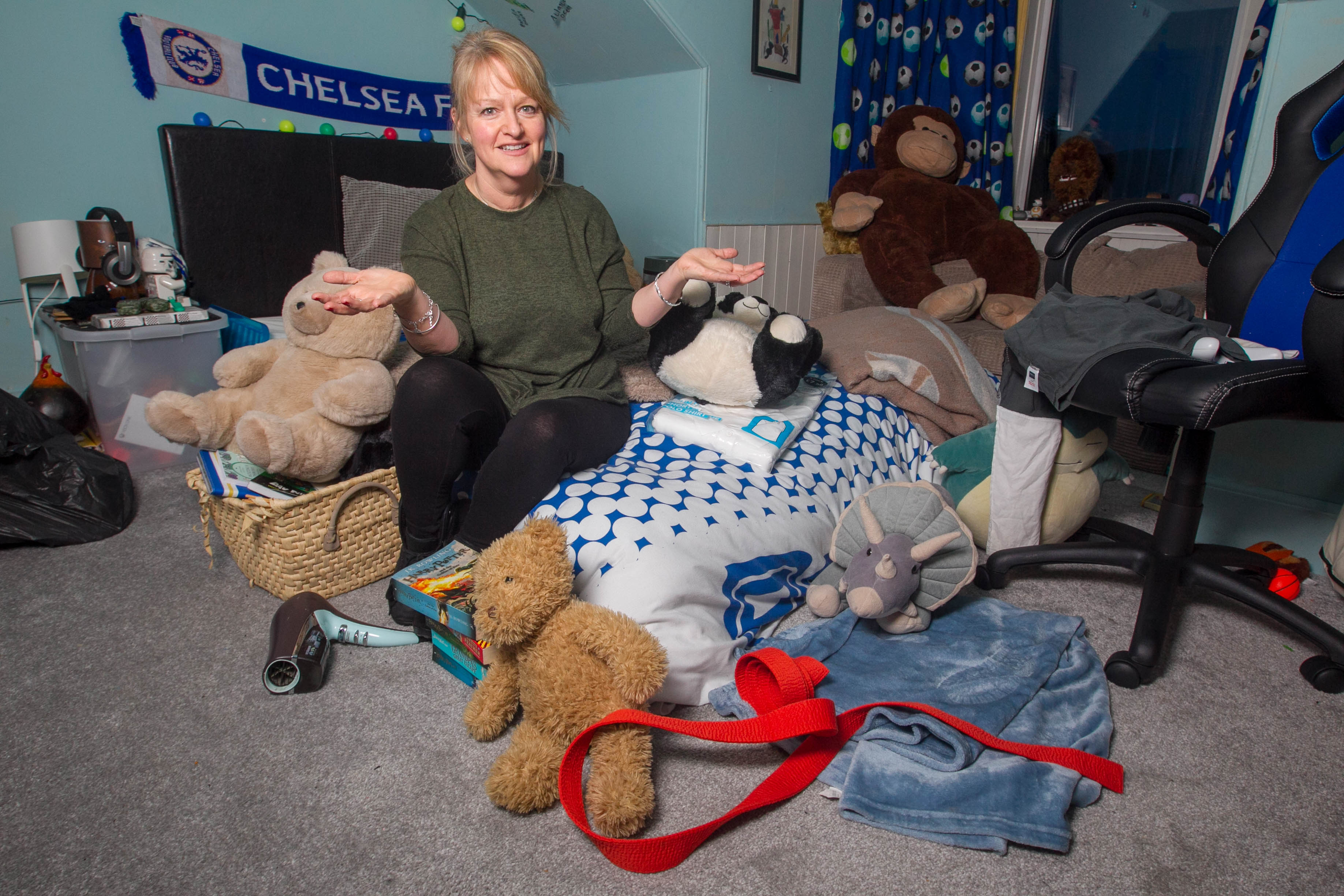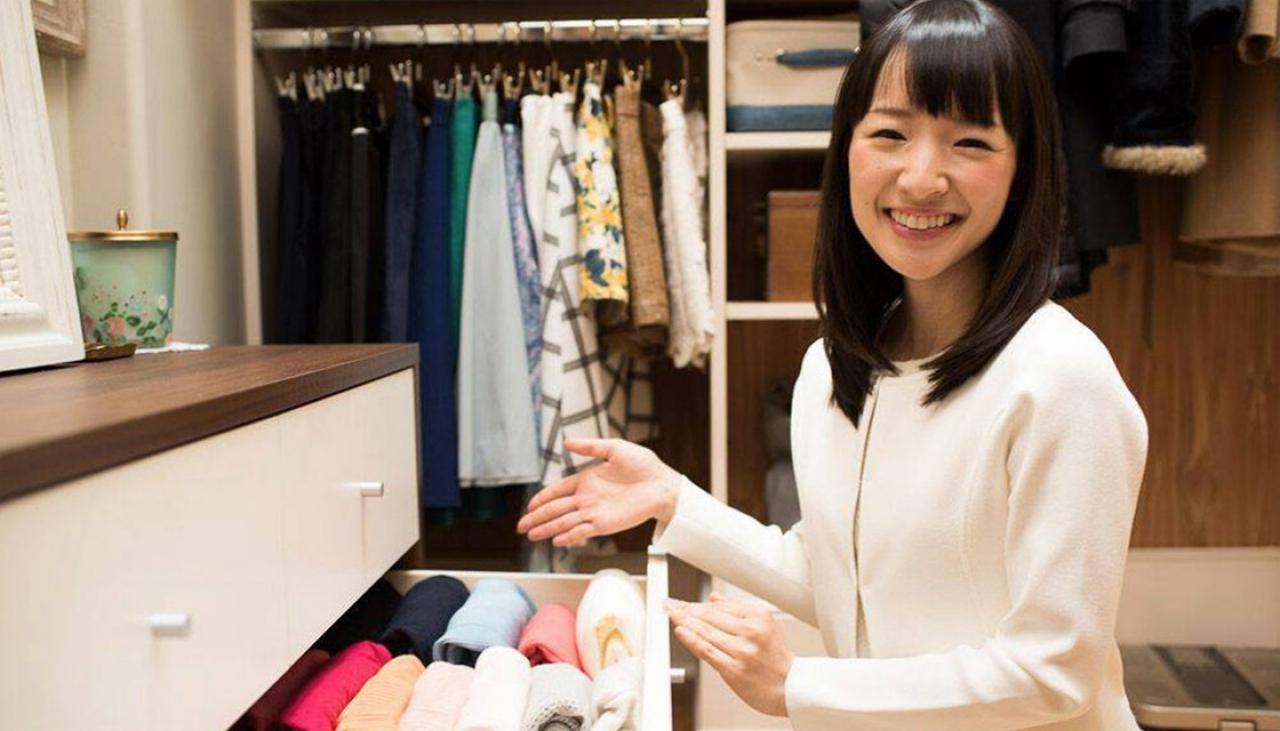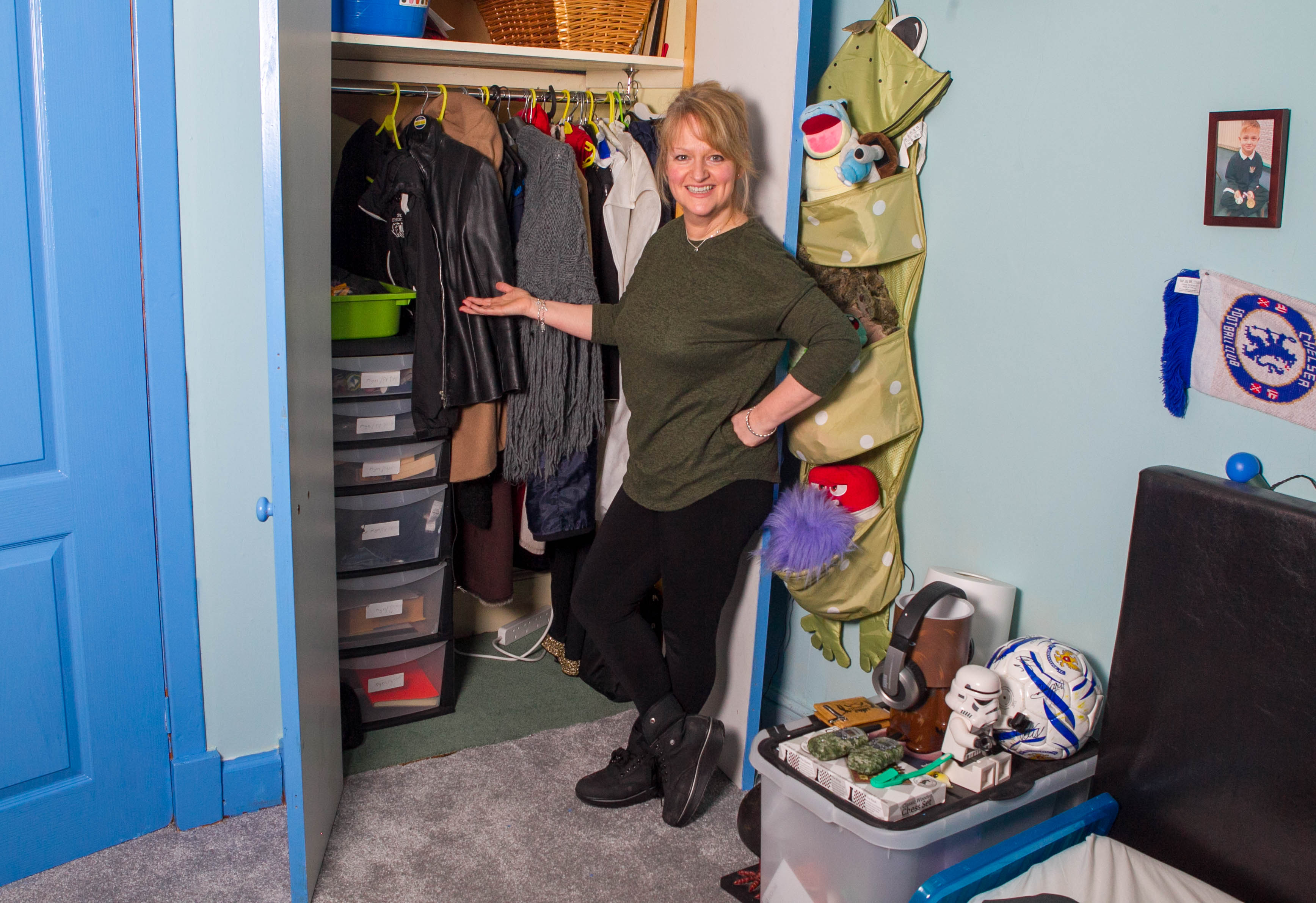
HER books have sold 11 million copies around the world and she has been listed as one of Time Magazine’s 100 most influential people.
And now, thanks to a new Netflix show based on her lifestyle manual, The Life-Changing Magic Of Tidying, Japanese decluttering guru Marie Kondo has sparked a tidying revolution.
Suddenly everyone is discussing the best way to fold your socks and charity shops are swamped with neatly folded donations as thousands of us dig through wardrobes, book shelves and cupboards discarding everything that doesn’t fill us with happiness.
For the uninitiated, Kondo’s philosophy is simple: you keep all the things in your home that “spark joy” and throw away the rest. What’s left can be folded and stored in such a way that you will never feel disorganised again and your life will be transformed.
During her shows, using a translator, Marie visits ordinary people’s messy homes and transforms them in a matter of weeks. She first “talks” to the house and teaches its occupants how to bring order and joy back into their lives.
She tackles different issues; family living; clearing out after losing a partner, managing living with toddlers, helping students organise themselves better. Even the most sceptical among her new disciples claim adopting the technique has changed their lives.
Marie has been obsessed by organising since her childhood and started her tidying consultancy business when she was a 19-year-old student in Tokyo.
Marie, 34, who lives in the Japanese capital with her husband and daughter, says: “Life truly begins only after you have put your house in order. That’s why I’ve devoted most of my life to the study of tidying up. I want to help as many people as possible tidy up once and for all.
“The KonMari Method is a simple, smart and effective way to banish clutter forever. You start by discarding. Then organising your space, thoroughly and in one go. If you adopt this strategy, you’ll never revert to clutter again
“Putting your house in order positively affects all other aspects of your life.”
The new self-help trend has also said to have had a positive knock-on affect for the charity sector. Charities Age UK, Barnardo’s and the British Heart Foundation have all reported an increase in donations this month.
While the charities admitted the increase could not be put down to a single cause, the Marie Kondo is widely accepted to have pushed many of us to start the year on clutter-free footing.
Let’s be honest, there’s more to life than tidying and while my house is clean, I have four children, so, tidy? Not so much. There are usually books, toys, shoes and clothes all over the place.
Admittedly, when the house is looking neat, it is a much nicer space to live in but it just doesn’t stay that way for long. However, according to Marie Kondo, the drudgery of housework can be a thing of the past. An ordered home is a happier home, apparently, and so, after watching her Netflix show, I gave it a go.
You have to pick a category not a room and tackle this first.
“Don’t think ‘I’ll tidy the bedroom first and then move onto the living room’. This approach is fatal,” says Marie. So, we start with clothes. First, you must get all the clothes you own and lay them out on the floor and see if you “love” everything you own. Just why am I keeping that dress I wore to my friend’s wedding 15 years ago? I don’t love it. Bin. And so it goes on.
Then there’s the way to fold everything. Don’t worry it’s not a lesson in origami – it’s just a simple way of storing your clothes in drawers so you can see what’s in them at first glance – and stop the need for hurried rummaging.
So, has it worked? Yes. We are only in week two but the house is tidier. The children know where their clothes are, at least the ones they didn’t bin. The clutter is slowly going and I’m spending much less time tidying up. Marie Kondo may be little but she’s had a huge effect on our house.
Start clearing out your clutter by asking is what you are keeping in cupboards and drawers “sparking joy”? If it doesn’t then it’s time to go. “Deciding what to keep on the basis of what sparks joy in your heart is the most important step in tidying.”
Sort by category, not by location. “Say for example you start with the bedroom wardrobe or cupboard. After you have finished sorting and discarding, you are bound to come across clothes you kept in another cupboard or a coat draped over a chair. This wastes time and effort.”
Make tidying a special event. “There are two types of tidying. Daily tidying and special event tidying. Daily tidying is using something and putting it away. But the purpose of my book is to inspire you to tackle the ‘special event’ of tidying, of putting your house in order as soon as possible.”
When it comes to books, she says: “The most common reason for not throwing away a book is ‘I might read it’ or ‘I want to read it again’. As with clothing, we need to stop and think about what purpose the books serve. Keep only the books that will make you happy when you see them on your shelves.”
Being surrounded by things that bring you joy makes you happy. “I can think of no greater happiness in life than being surrounded by the things that you love. All you need to do is get rid of anything that doesn’t touch your heart like this.”
“So far, so tidy as my family learns how to live with a lot less mess.”
Writer Elaine Hunter tries the Magic of Tidying…and likes it.
Let’s be honest, there’s more to life than tidying and while my house is clean, I have four children, so, tidy? Not so much. There are usually books, toys, shoes and clothes all over the place.
Admittedly, when the house is looking neat, it is a much nicer space to live in but it just doesn’t stay that way for long.
However, according to Marie Kondo, the drudgery of housework can be a thing of the past.
An ordered home is a happier home, apparently, and so, after watching her Netflix show, I gave it a go.
You have to pick a category not a room and tackle this first.
“Don’t think ‘I’ll tidy the bedroom first and then move onto the living room’. This approach is fatal,” says Marie. So, we start with clothes.
First, you must get all the clothes you own and lay them out on the floor and see if you “love” everything you own. Just why am I keeping that dress I wore to my friend’s wedding 15 years ago? I don’t love it. Bin. And so it goes on.
Then there’s the way to fold everything. Don’t worry it’s not a lesson in origami – it’s just a simple way of storing your clothes in drawers so you can see what’s in them at first glance – and stop the need for hurried rummaging.
So, has it worked? Yes. We are only in week two but the house is tidier. The children know where their clothes are, at least the ones they didn’t bin.
The clutter is slowly going and I’m spending much less time tidying up. Marie Kondo may be little but she’s had a huge effect
on our house.
Scotland’s decluttering experts have their say
Clara Moore, The Joy of Space
Clara runs The Joy of Space and follows the Marie Kondo method to decluttering which she shares and runs with her clients.
My business came about through my love of tidying and organising.
I had two parents with strong hoarding tendencies and was not taught to tidy as a child.
I tend towards minimalism but was married to someone with strong hoarding tendencies.
Experiencing the effects of this on my children and in our home I was amazed at the transformative effect that doing the Marie Kondo method had.
This led me to thinking about tidying and whether we are taught to tidy as children and the impact this has on us throughout our lives and how it can affect our relationship with our belongings and our homes.
I felt so strongly about this that I applied to complete the first international KonMari method training and was delighted to be the second UK certified consultant and the first Scottish certified consultant.
It brings me great joy to work with clients of all ages, men and women and children with the KonMari method and to help bring the love of tidy and the joy of a calm home and inner calm to their lives.”
Zemirah Moffatt, Insightful Moves
Zemirah’s focus is on the psychology of clutter and looking at why we often find ourselves with more stuff than room to put it in.
“I think one of the biggest causes of clutter, is to do with the heart. It’s unresolved trauma. Death, separation, migration, loss.
People will hold onto objects that remind them of a person deceased.
As babies, we seek to attach, but if a primary care giver abandons us or abuses us, then biologically, we’re still programmed to attach.
A mug or a plastic bag is not going to abandon or hit us. And so the attachment to inanimate objects gives security and safety from a very early age.
I think my approach differs from what many understand as what a declutterer does, as it’s not just about clearing things out.
There are many who live with minimal stuff, who are seriously unhappy. So it’s not really about what you see on the surface, it’s about how their things makes them feel, and it’s about working through the things and transforming their feelings and interactions with things from negativity and stuckness, to positivity and creation.”
Elaine McKinlay, Clear Mountain Decluttering
Elaine McKinlay’s business helps clients declutter their homes but then also works with clients to maintain declutter once the process has been completed.
As you can imagine each client has different levels of “clutter” as clutter is like noise.
Each person is comfortable with and can tolerate a different level. What works for one client may not work for another.
As I am a motivational coach I am always looking for ways to help the client out with a view to being able to maintain the space when I have left.
This is vitally important when decluttering. I cut my sessions down into bite-sized chunks.
This way the client is not overwhelmed by the process and it is done at a speed that suits that client.
I encourage clients to look at the item and ask these questions:
Do I really need this? Do I really want this? How does this make me feeling having this around?Could someone else use this?
Letting go is not easy, that is why Professional help can guide you through the process.”

Enjoy the convenience of having The Sunday Post delivered as a digital ePaper straight to your smartphone, tablet or computer.
Subscribe for only £5.49 a month and enjoy all the benefits of the printed paper as a digital replica.
Subscribe
